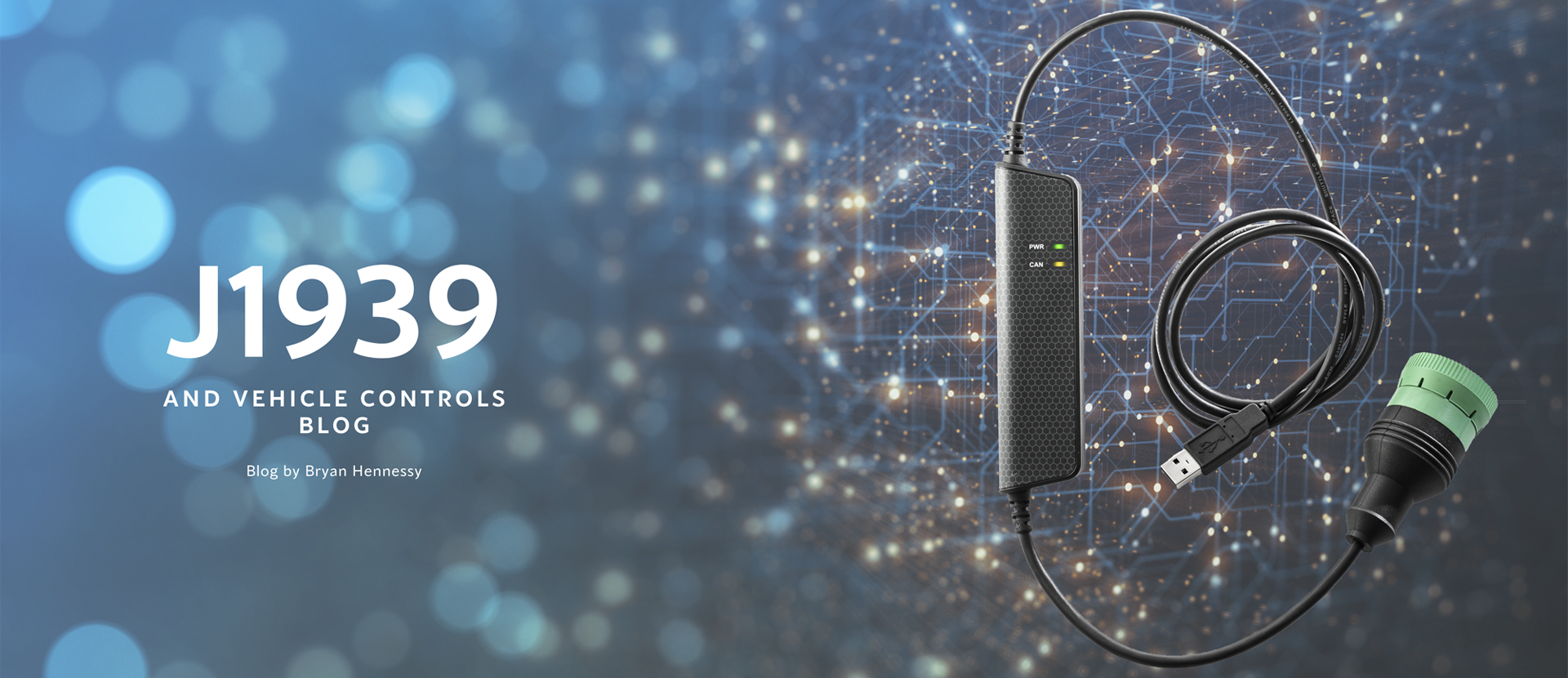This blog by Bryan Hennessy will provide updates on the wider topics under discussion within the J1939 committees. Bryan is an experienced engineer in the fields of CAN diagnostics, marine electronics and semiconductors. He is an active member of the SAE Truck and Bus Control and Communications Network Committee and J1939 Task Force and chairs the ‘J1939-21 – Data Link Layer Task Force’.
News
Q2/2023 J1939 and vehicle controls blog


Considering the possibilities of SAE J1939 over CAN XL
In the SAE J1939 world, CAN XL has been talked about for a few years now, in the context of Next Generation technology that may or may not be incorporated to carry the J1939 protocol. The committee is a long way from making a decision related to CAN XL, and even further from implementing it, but early discussions have started!
An interesting point that was mentioned in a recent meeting is that we may have already done more work on this than we realize. Some of the structure that went into SAE J1939-22, for J1939 data over CAN FD, could be reused for J1939 over CAN XL.
In SAE J1939-22 we developed and standardized a method of packing eight-byte data frames designed for Classical CAN into larger CAN FD frames that can hold up to sixty-four bytes. We defined and used the Contained Parameter Group (C-PG) to make this happen, and this seems to be working very well. It is mainly the C-PG that could be reused with CAN XL in much the same way it is used in CAN FD. In one respect, the task will be even easier for CAN XL as we don’t have to worry about padding bytes to bring the payload up to the next standard CAN FD frame size. This is because CAN XL supports any frame size up to 2048 bytes.
There is one concern that relates to the nature of C-PGs in general. Any J1939-22 frame that is addressed to a specific device can only contain C-PGs going to that device. If we packed messages destined for multiple devices into one CAN FD frame, each receiving device would have to take that frame apart and look for its own messages packed inside. If we retain this structure for CAN XL, a longer wait will be required to fill up a frame with messages destined for one device, causing significantly increased latency for the C-PGs.
There are many considerations and ways to make this work, so it is possible that looking a few years down the road we could have J1939 data going over CAN XL, or we could decide that the benefit does not justify the difficulties, and simply stay with what we have in SAE J1939-22. Either way, we have a few interesting years ahead of us.
Related content
- SAE J1939 Introduction
- SAE J1939 DBC files now available for use by CAN software
- MathWorks and Kvaser Present: Using J1939 logged field data for Data Analysis and Model-Based Design
- ATI and Kvaser J1939 and CANLab Webinar
- In-Vehicle Communication Standards for Trucks: Where Do We Go With J1939?
- Bryan Hennessy’s Q1/2024 SAE J3271 update
 linkedin
linkedin twitter
twitter youtube
youtube youku
youku weixin
weixin